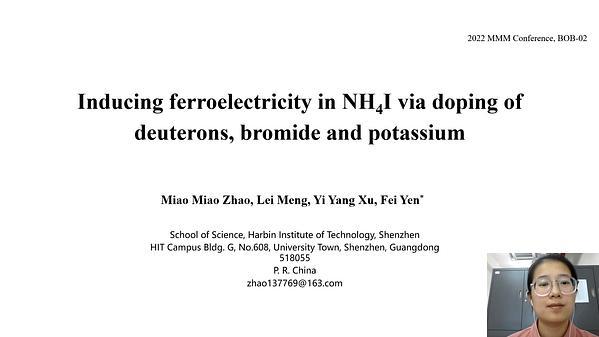Would you like to see your presentation here, made available to a global audience of researchers?
Add your own presentation or have us affordably record your next conference.
Current magnetic sensors have been used to detect position, angle, rotation and magnetic fields, based on three key types of technologies: Hall, anisotropic and giant
magnetoresistance effects 1. Hall sensors are made by patterning Silicon into a cross-bar, where sensitivity can be increased by replacing Si with compound semiconductors such as InAs
and GaAs. However, these sensors suffer from large temperature dependence of their output in a finite magnetic field and have limitations in their working temperature range (between -40
and 120oC) as well as their detectable field range (between 10-2 and 102 T). We have demonstrated a linear response in magnetisation under a small magnetic field (up to +/-50 mT) in an
antidot structure consisting of ferromagnetic Fe nanoparticles dispersed in insulating MgO matrix 2. In this study, we have adopted this system to replace ferromagnetic Fe dots with Co
and have measured magnetisation dynamics.
We co-deposited Co and MgO at the ratio of 2:1 by electron-beam evaporation on MgO(001) and (011) substrates in ultrahigh vacuum molecular beam epitaxy. The total film thickness
was 30 nm. The films were ex-situ annealed at 400oC for up to 3 hours under vacuum. All the samples show very strong magnetic anisotropy, which is different from the Fe:MgO films
previously reported 2. The MgO010 direction is found to be the easy axis, while the MgO100 is the hard axis. The squareness is estimated to be 0.936 for the as-deposited film,
improving up to 0.939 for the 3-h annealed film. Along the hard axis, the magnetisation curve shows almost linear response within ± 750 Oe, which is broader than that for the Fe:MgO
films (± 500 Oe) 2. This may indicate the Co nanoparticles dispersed in the MgO matrix are crystallised in fcc. with the epitaxial relationship of Co(001)010//MgO(001)010. We
will also report the results on the Co:MgO films grown on MgO(011) and discuss the steps towards the sensor applications.
References:
1 M. A. Khan et al., Eng. Res. Exp. 3, 022005 (2021).
2 M. Rummey et al., IEEE Trans. Magn. 48, 4010 (2012).
3 M. Hashimoto et al., J. Cryst. Growth 166, 792 (1996).
